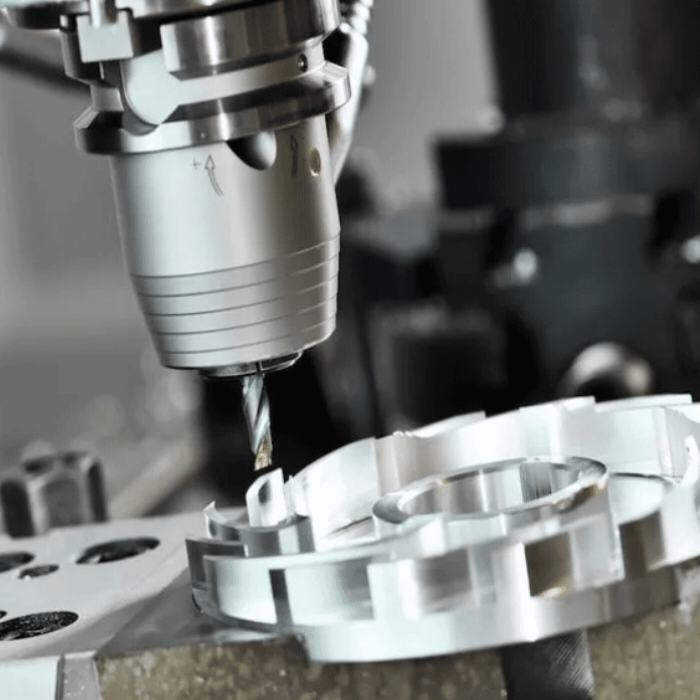The Reasons for Deformation of Machine Parts During Processing

The phenomenon that machine parts or components change in shape or size under the action of external force is called deformation. Excessive deformation is an important type of machine parts failure and an obvious sign for judging ductile fracture. Therefore, we need to analyze the causes of the following deformations of machine parts in the processing process and take corresponding measures.
According to whether the deformation can be recovered after the external force is removed, the deformation of machine parts or components can be divided into two categories: elastic deformation and plastic deformation.
1. Elastic deformation
The deformation of metal parts when the applied stress is less than the yield strength of the material is called elastic deformation.
(1) When the external force is removed, the deformation of the parts is eliminated and the original shape is restored.
(2) When the material deforms elastically, the strain is proportional to the stress, and its ratio is called the elastic modulus, which represents the resistance of the material to elastic deformation. When other conditions are the same, the higher the elastic modulus of the material, the higher the rigidity of machine parts or components made of this material, and the stronger the ability to maintain its inherent size and shape when subjected to external forces.
(3) The amount of elastic deformation is very small, generally not exceeding 0.1% to 1.0% of the original length of the material.
In the process of using metal parts, if excessive elastic deformation occurs (excess elastic deformation refers to the elastic deformation that exceeds the design allowable), it will affect the normal operation of the parts. For example, when the drive shaft is working, excessive elastic deformation will cause the gear meshing condition on the shaft to deteriorate, affecting the working life of the gear and the rolling bearing that supports it; excessive elastic deformation of the machine tool rail or spindle will cause the machining accuracy to decrease or even fail to meet the machining requirements. Accuracy.
Therefore, in the operation of machine equipment, it is very necessary to prevent excessive elastic deformation. In addition to correct design, correct use is very important. Overload operation should be strictly prevented, operating temperature specifications should be paid attention to, and thermal deformation should be prevented.
2. Plastic deformation
Plastic deformation, also known as permanent deformation, refers to a part of the unrecoverable deformation left by machine parts after the applied load is removed. From the perspective of the macroscopic morphological characteristics, the plastic deformation of metal parts mainly includes three forms: warping deformation, volume deformation, and aging deformation.
(1) Warpage deformation
When the metal part itself is subjected to certain stress (such as machine stress, thermal stress or structural stress, etc.), the actual stress value exceeds the tensile yield strength or compressive yield strength of the metal in this state, and warping will occur. Curved, elliptical, or twisted plastic deformation. Therefore, the warping deformation of metal parts is the result of complex stress. Warpage deformation is common in slender shafts, thin plate-shaped parts, and thin-walled ring and sleeve parts.
(2) Volume deformation
In the process of heating and cooling of metal parts, due to the change in specific volume caused by the transformation of metallographic structure, the phenomenon of volume expansion and contraction of metal parts is called volume deformation. For example, during the quenching phase transformation of steel, the specific volume of austenite increases when it transforms into martensite or lower bainite, and the volume expands. After the quenching phase transformation, the specific volume of the retained austenite decreases and the volume shrinks.
The degree of volume change during the formation of martensite is related to the carbon content in the martensite during the quenching transformation. The more carbon content in the steel, the greater the specific volume change when martensite is formed, and the greater the expansion. In addition, the uneven distribution of carbides in steel tends to increase the degree of deformation.
(3) Aging deformation
After the heat treatment of the steel, the unstable structure is produced, and the internal stress caused by this is in an unstable state; the casting internal stress formed during the casting process of the casting is also in an unstable state. When placed or used for a long time at room temperature, the stress in the unstable state will gradually change and become stable. The accompanying deformation is called aging deformation.
Plastic deformation leads to changes in the size and shape of each part of the machine parts, which will cause a series of undesirable consequences. For example, plastic bending of the spindle of a machine tool will not guarantee the machining accuracy, resulting in an increase in the rejection rate, and even making the spindle inoperable.
Although the local plastic deformation of the machine basic part does not cause an obvious failure like the overall plastic deformation of the part, it is also an important form of causing the part to fail.
In the process of design and production, we must try our best to ensure that the machine parts are not deformed, otherwise, it will seriously affect the performance of the machine parts. If you want to know more about machine parts after reading the above content, you can get a more comprehensive solution by contacting us.
As a professional parts supplier, we are committed to providing customers with high-quality products and thoughtful service. We have an experienced manufacturing team and a strict quality inspection system, which can control the quality of our products in an all-round way. At the same time, we will also provide thoughtful one-stop service and effective solution technology according to the needs of customers. If you are interested in our machine parts, please contact us immediately!


